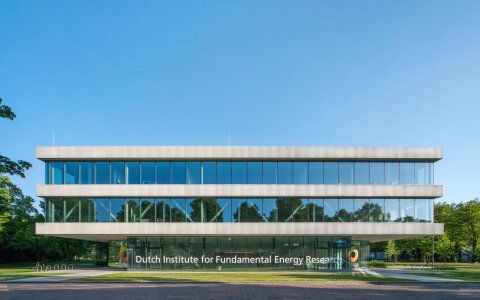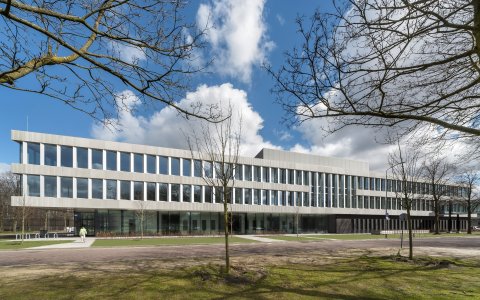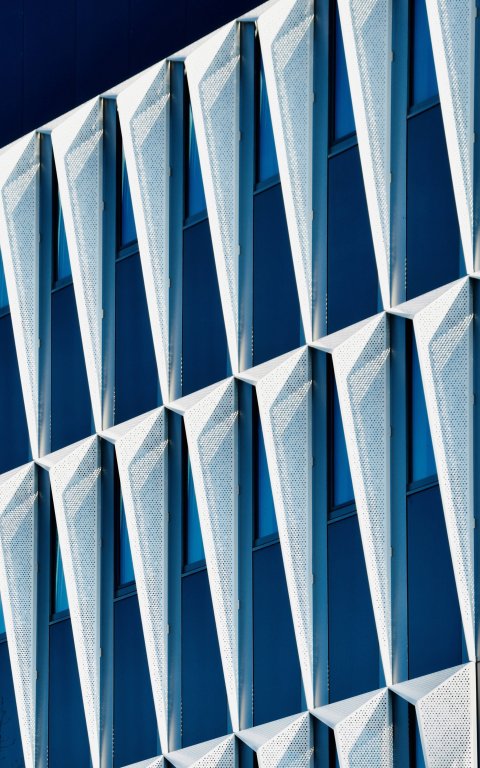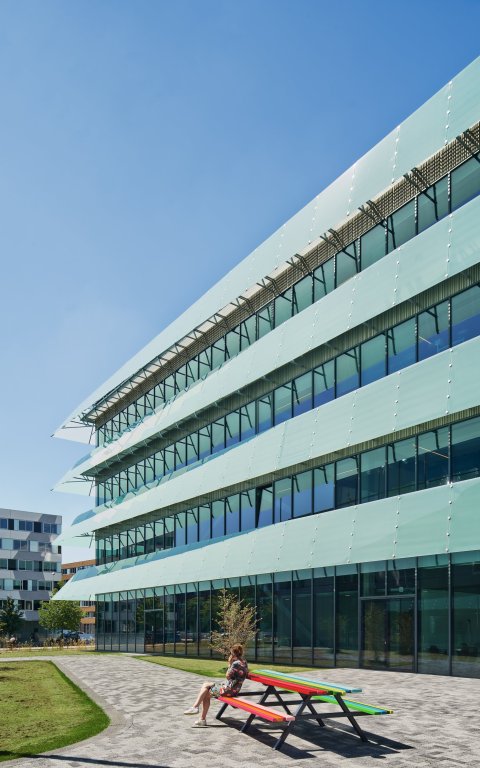DIFFER, Eindhoven
DIFFER, the Dutch Institute For Fundamental Energy Research, conducts fundamental research that is geared towards making clean energy widely available through fusion energy and solar fuels. It is, in short, a truly important institute in the context of the transition toward sustainable energy. EHA was selected to design its new premises at Eindhoven University of Technology, following the decision to move the institute from Nieuwegein.
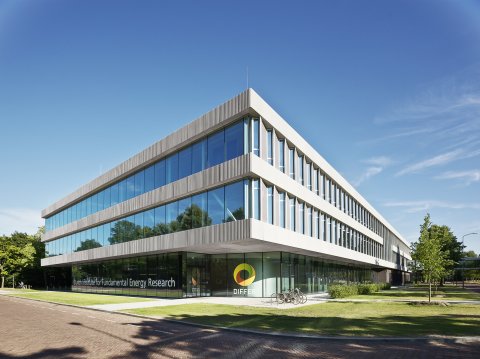
Project details
Name DIFFER
Client NWO
Location Eindhoven
Status Completed 2015
Awards & Nominations Nominated for the Dirk Roosenburgprijs 2015
Architect Ector Hoogstad Architects
Building physics Peutz
Building costs consultant IGG
Construction IMD Raadgevende Ingenieurs
Contractor Dura Vermeer
Installations consultant Deerns
Photography Petra Appelhof, Norbert van Onna
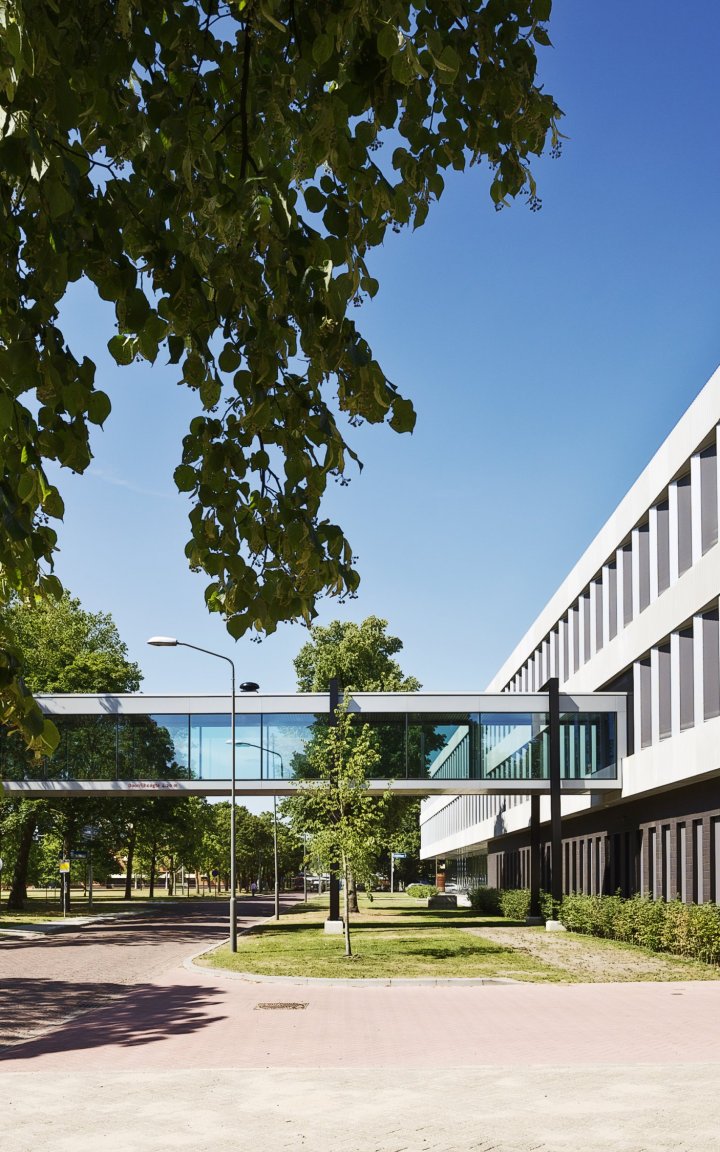
Science for future energy
DIFFER is part of the Netherlands Organisation for Scientific Research (NWO). It collaborates with the academic world and industry on “Science for Future Energy”. Its location on the TU/e campus, literally between the university’s academic buildings and prospective industry partners, therefore couldn’t have been more suitable.
The former premises of DIFFER in Nieuwegein had long ceased to meet the institute’s needs for multiple reasons, all of which were to be addressed by the new design. But one of the key stipulations for the new building was that it encourage interaction between its users. The institute needed something with an air of transparency, in which workers would feel completely at home and where TU/e students would feel welcome. Naturally, it also had to facilitate the institute’s hightech activities without issue.
Boldly blending in
The new building is designed to blend in perfectly with its surroundings, and the supply routes likewise follow the lines and curves of the pre-existing rows of trees, which have been extended with new plantings. The upper floors appear to float above a base wrapped in floor-to-ceiling glass, which results in an absence of visual barriers between people inside the building and the surrounding campus and gives passers-by a clear view of activity inside the building. By the same token, three-metre-high glass walls on the upper floors of the north-facing façade facilitate sweeping vistas of the surrounding lime trees.
A high-tech core
The interior layout is quite simple. At the heart of the building are two large experiment halls, one of which houses the remarkable Magnum-PSI linear plasma generator. Situated around these is a three-storey ring of offices and support functions. Communal facilities - such as meeting rooms, a canteen and lounges - are situated between the halls and arranged in correspondence with the campus’s main urban axis. As mentioned above, it was crucial that the building facilitate encounters between its users and with the wider community. To this end, there are multiple staircases and spacious communal areas between floors, all of which lead to the social heart of the premises.
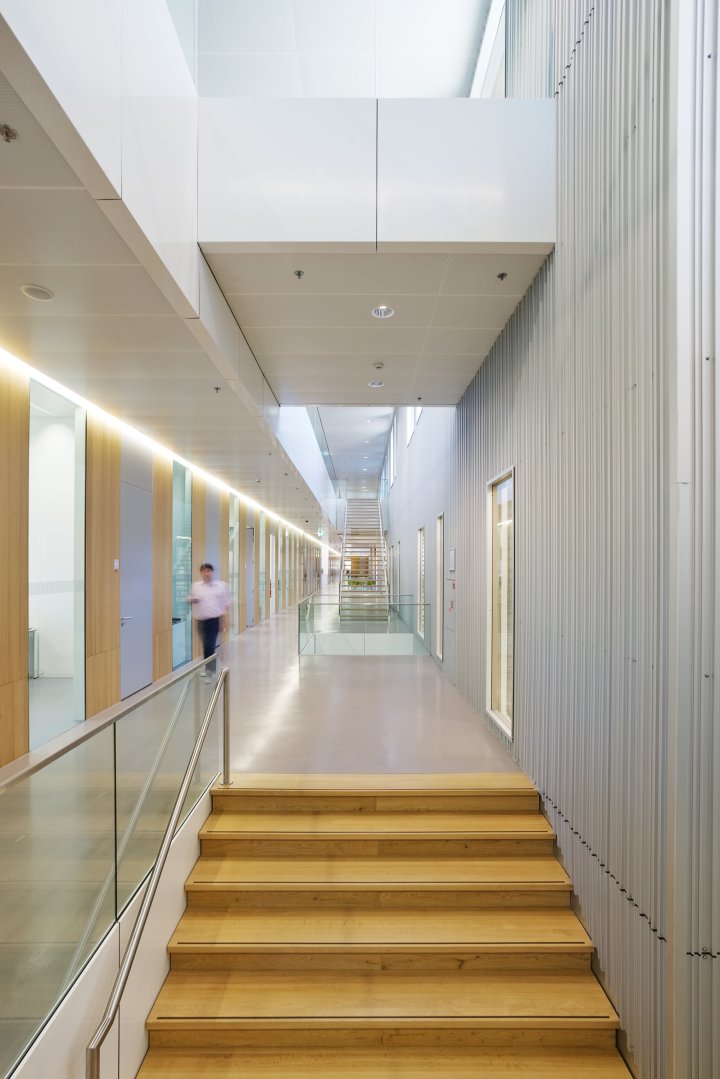
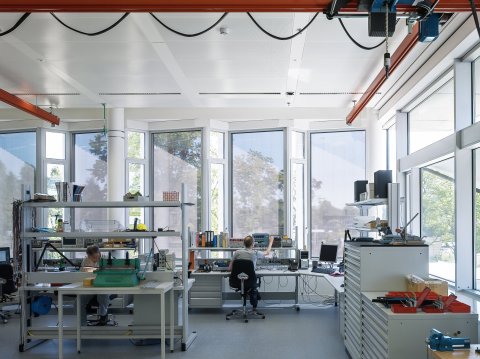
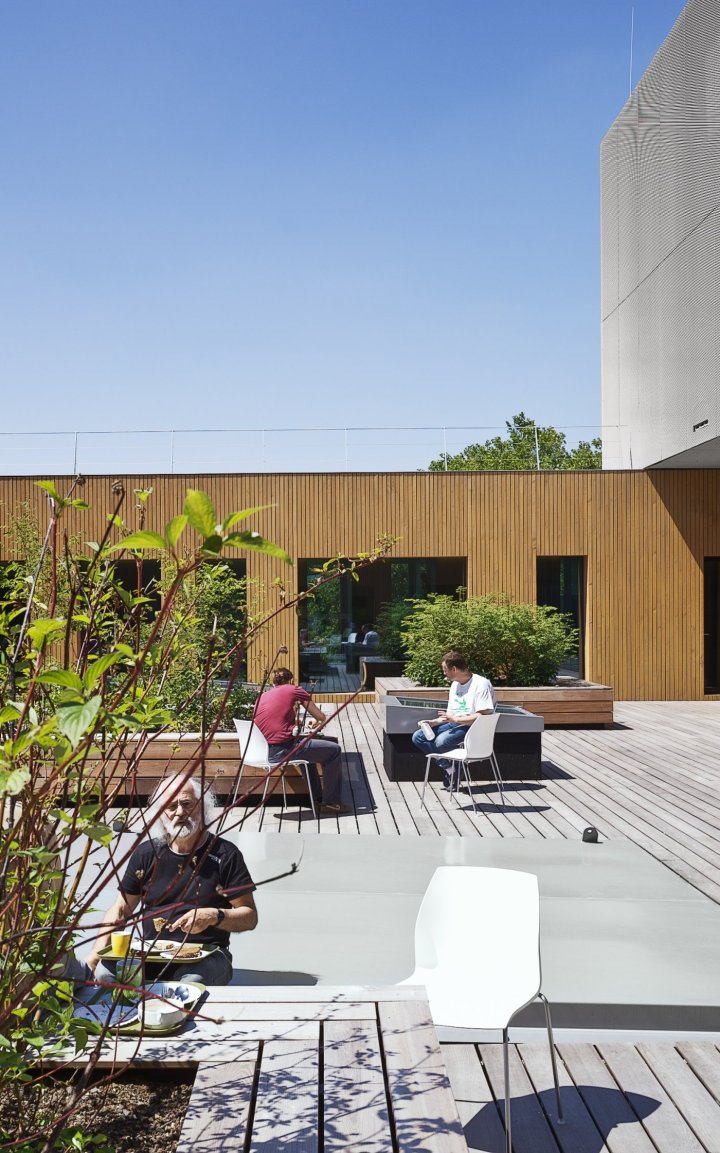
Function and idyll
The building presents itself as a pavilion amid its surroundings. Its design and the choice of materials used in its construction are at once contemporary and reminiscent of the architectural idiom of the early days of the TU/e. The wide use of glass and the profiled concrete bands that wrap around the building give it an air of both authority and transparency. These qualities apply just as well to the interior, which is characterised by an abundance of natural light and greenery, the relationship between the qualities and natural elements encapsulating the central idea of the campus itself: a synthesis of scientific function and idyllic form.
Energy excellence
As is to be expected from the leading institute for renewable energy, sustainability is reflected in every aspect of the design. This is most visible in the east and west facades, which are designed to prevent glare and overheating while optimising daylight penetration and making the most of the surrounding views. These objectives are achieved by means of a saw-tooth profile that only necessitates the use of roller blinds in the sections facing the sun while the north-facing sections continue to offer views of the world outside. Other measures taken to support the building’s sustainable performance include the use of triple glazing and the installation of solar cells on the roof. The collective effect of these measures earned the building a BREEAM Excellent rating, following bespoke assessment.
